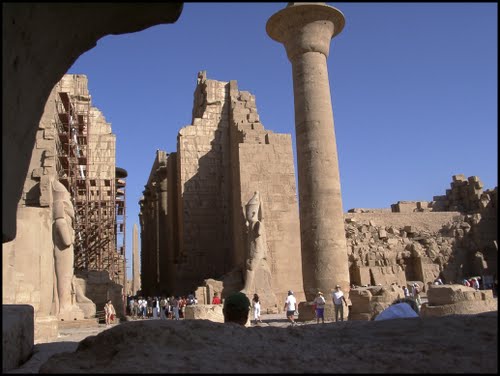The temple of Karnak was known as Ipet-isut (Most select of places) by the ancient Egyptians. It is a city of temples built over 2000 years and dedicated to the Theben triad of Amun, Mut and Khonsu.
This derelict place is still capable of overshadowing many of the wonders of the modern world and in its day must have been awe inspiring.
For the largely uneducated ancient Egyptian population this could only have been the place of the gods. It is the mother of all religious buildings, the largest ever made and a place of pilgrimage for nearly 4,000 years. Although todays pilgrims are mainly tourists. It covers about 200 acres 1.5km by 0.8km The area of the sacred enclosure of Amon alone is 61 acres and would hold ten average European cathedrals.The great temple at the heart of Karnak is so big, St Peter's, Milan and Notre Dame Cathedrals could be lost within its walls. The Hypostyle hall at 54,000 square feet with its 134 columns is still the largest room of any religious building in the world. In addition to the main sanctuary there are several smaller temples and a vast sacred lake.
Originally there was three avenues of sphinxes one of which, two miles long, linked up with the avenue of human-headed sphinxes of the temple of Luxor.
The Libyan pharaohs (935-730 BC) built the vast court of the Bubastites. This column was once part of the kiosk of Taharka where the processional barks were kept.










Comments
Post a Comment